The life of famous Dutch artist Vincent van Gogh (1853-1890) was very troubled. His love for painting was what kept him going during the final decade of his life, but it wasn’t enough to keep him from going mad and taking his own life.
Many of his most famous paintings somehow reflect his state of mind, which was often chaotic to put it euphemistically. This makes this particular artwork very special because it’s quite the opposite.
Let’s take a closer look at some of the most interesting facts about Irises by Vincent van Gogh, a very remarkable work of art by the Post-Impressionist artist.
1. It was painted shortly after he arrived at the mental hospital
Vincent van Gogh moved to Arles, a small city in southern France, in February of the year 1888. This was shortly after he became tired of living in Paris and constant quarreling with his brother Theo (who was his great fan but who wasn’t able to live with him).
He had the idea of starting an art colony in this quiet town and therefore decorated the place he stayed in called “The Yellow House.” His sunflower paintings are one of the great works he produced for this purpose.
It all went downhill when Paul Gauguin came to visit, something that resulted in a complete mental breakdown in which he cut off part of his left ear on Christmas Eve of that year.
He checked in at the mental asylum in Saint-Rémy-de-Provence in May 1889 and he started working on Irises within a week of arriving there.
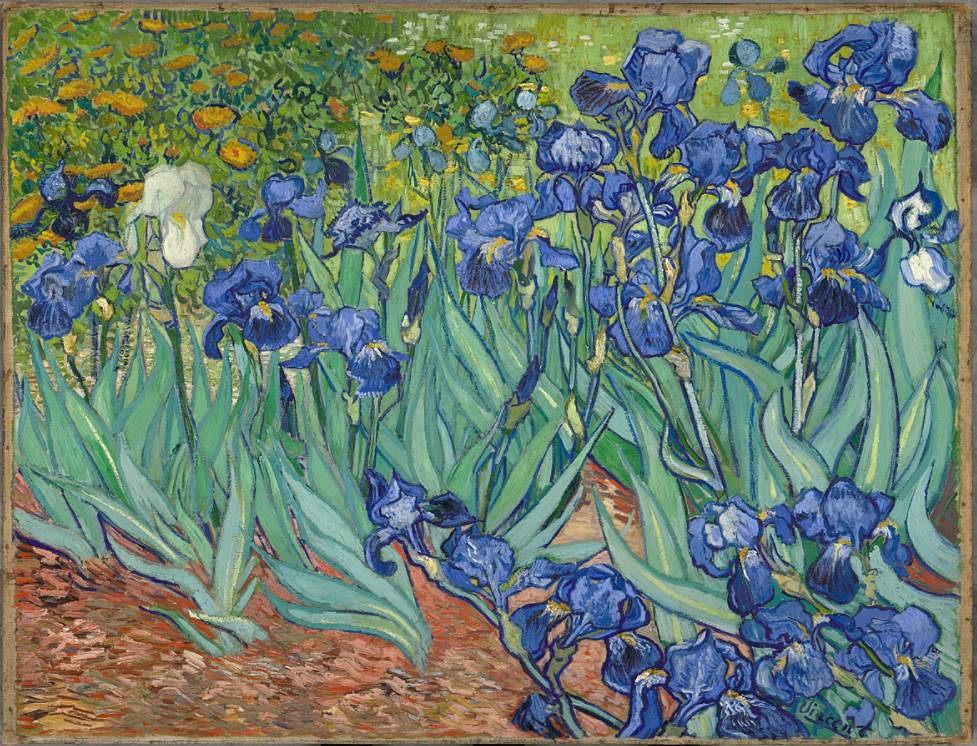
2. It depicts flowers that were growing in the hospital garden
There are anywhere between 260 and 300 species in the genus of Irises in the world, a flowering plant that was named for the Greek goddess of the rainbow. These plants grow abundantly in the Provence-Alpes-Côte d’Azur region in Southern France.
Van Gogh encountered these flowers in the herbal garden of the Monastery of Saint-Paul de Mausole, a former monastery that is now referred to as the “Clinique van Gogh.”
The painting is defined by the lack of exaggerated drama that is a dominant characteristic in many of his other works. It clearly emphasizes the notion that the artist found peace relatively fast in a place (mental hospital) that you wouldn’t expect it.
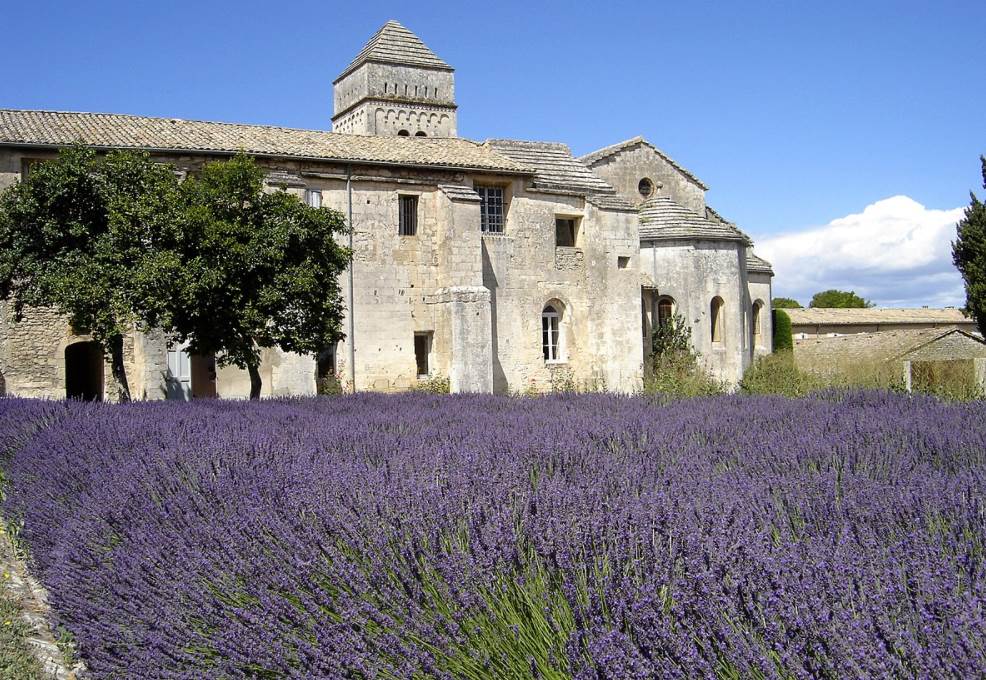
3. It’s one of a series of paintings he produced during his stay here
The painting of Irises is one of the approximately 130 paintings that the artist produced during his year-long stay at the Saint-Paul Asylum. Despite the beautiful landscape that surrounds it, van Gogh barely left the enclosed ground of this institution.
He produced one of the most famous works in his entire oeuvre here called “The Starry Night,” a scene that depicts the view from his bedroom window inside the hospital.
Apart from Irises, he also painted other flowers that grew inside the garden, including roses and lilacs. He also painted olive trees, the hospital itself, and the enclosed wheat field that was part of the compound.
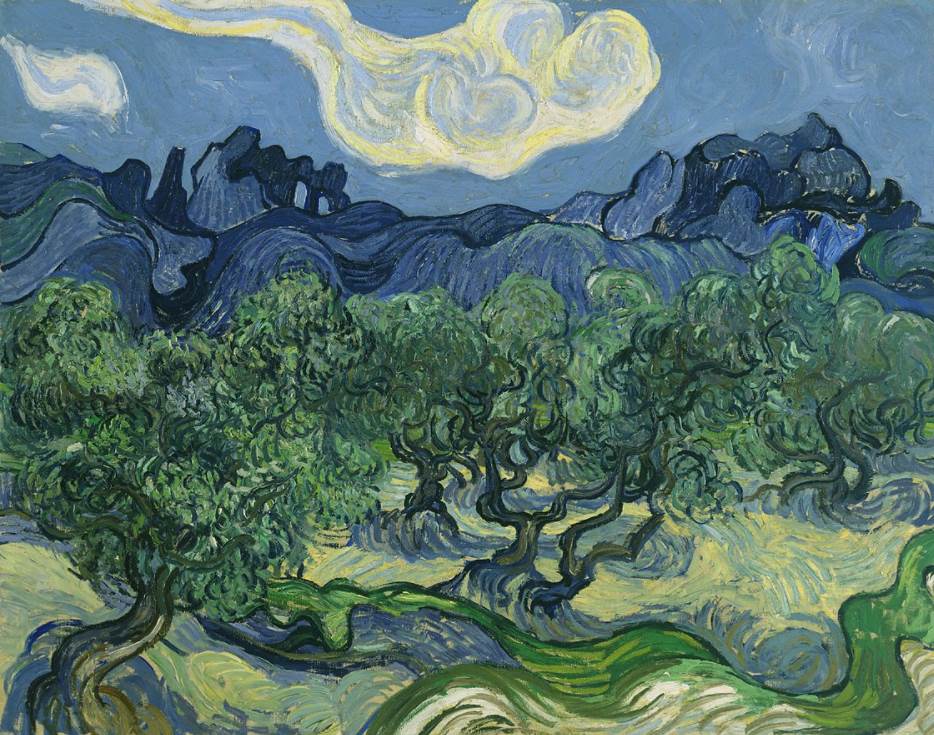
4. It was probably inspired by a particular form of Japanese art
The remarkable composition of the painting which depicts the irises at a monumental scale was most probably inspired by a form of Japanese art known as “Ukiyo-e.”
This genre consisted of either woodblock prints or paintings and was popular between the 17th and 19th centuries. It depicted flora and fauna and sometimes served as a form of Japanese pornography as well.
The name Ukiyo-e translates to “pictures of the floating world,” a reference to the broad number of subjects that were depicted and probably inspired the artist for this painting.
5. The painting was instantly admired by his brother Theo
Although both men found it impossible to live together in Paris, Theo never stopped admiring his older brother Vincent. He ran an art dealership in Paris and had connections with several artists.
Irises was one of the paintings he exhibited in September 1889 at the yearly exhibition of the Société des Artistes Indépendants or simply “Salon des Indépendants.” The other was “Starry Night over the Rhône,” an evening scene in Arles.
The Artistes Indépendants are still active today, although the exhibitions seized to be held following World War I. These exhibitions played a major role in the development of modern art in the 20th century.
Theo liked this particular painting as he wrote the following after it was displayed at the exhibition:
It strikes the eye from afar. The Irises are a beautiful study full of air and life.
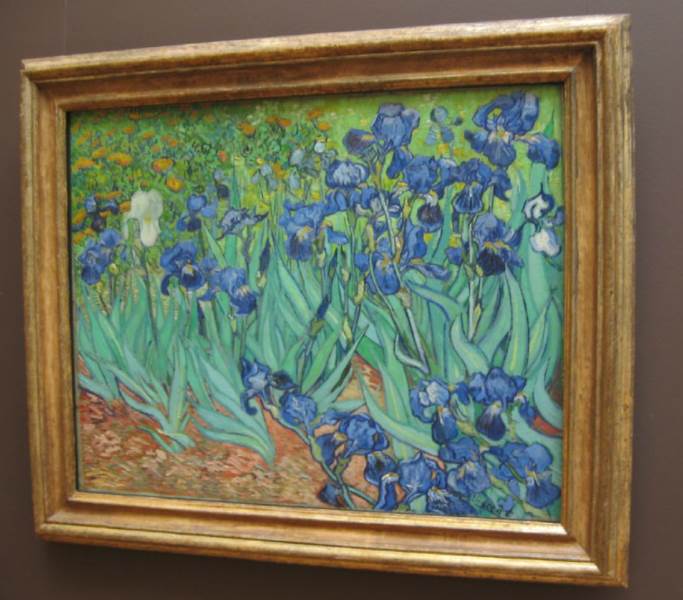
6. How big is Irises by Vincent van Gogh?
The painting has a standard size of the works produced by Vincent van Gigh during this period in his life. He was a very prolific painter who left behind about 860 oil paintings and a total of over 2,100 artworks.
Van Gogh’s Irises is an oil on canvas painting that has dimensions of 71 × 93 centimeters (29.25 × 37.12 inches).
7. It was initially owned by 2 of the artist’s great fans
The painting was owned by a man named Julien Tanguy, a man who was commonly known as “Père Tanguy.” He was a paint grinder and art dealer who was the subject of 3 portraits by Vincent van Gogh as well.
His ownership of the painting is also the reason why art historians conclude that the Japanese woodblock was Vincent’s source of inspiration because he integrated these into 2 of the portraits depicting the man.
Tanguy ended up selling the painting shortly after in 1892 to French art critic Octave Mirbeau (1848-1917) who paid 300 francs for the work.
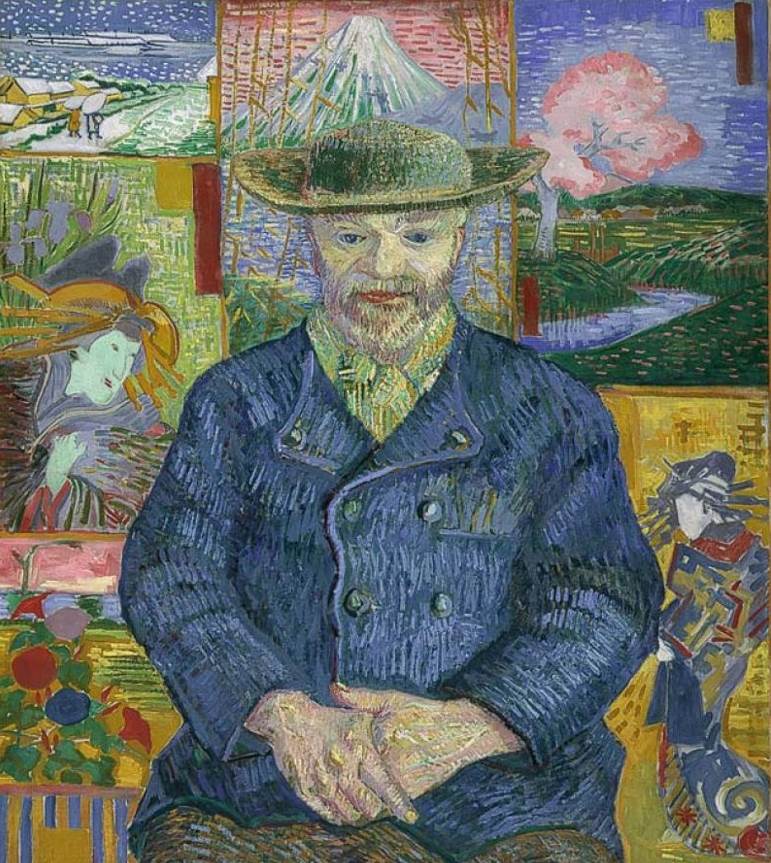
8. Where is the painting located today?
300 francs is nothing compared to what corrupt businessman Alan Bond presumably paid for the painting in 1987. He bought the painting for $53.9 million with the slight detail that he didn’t have enough money to pay for it.
This was the highest price ever paid for a painting at the time, a record that was broken by the Portrait of Dr. Gachet, another famous van Gigh painting that was sold for $82.5 million on May 15, 1990.
Bond managed to sell the painting for an undisclosed sum to the J. Paul Getty Museum in Los Angeles, California, in 1990. This is the museum where you can still admire the painting today along with countless other world treasures.



